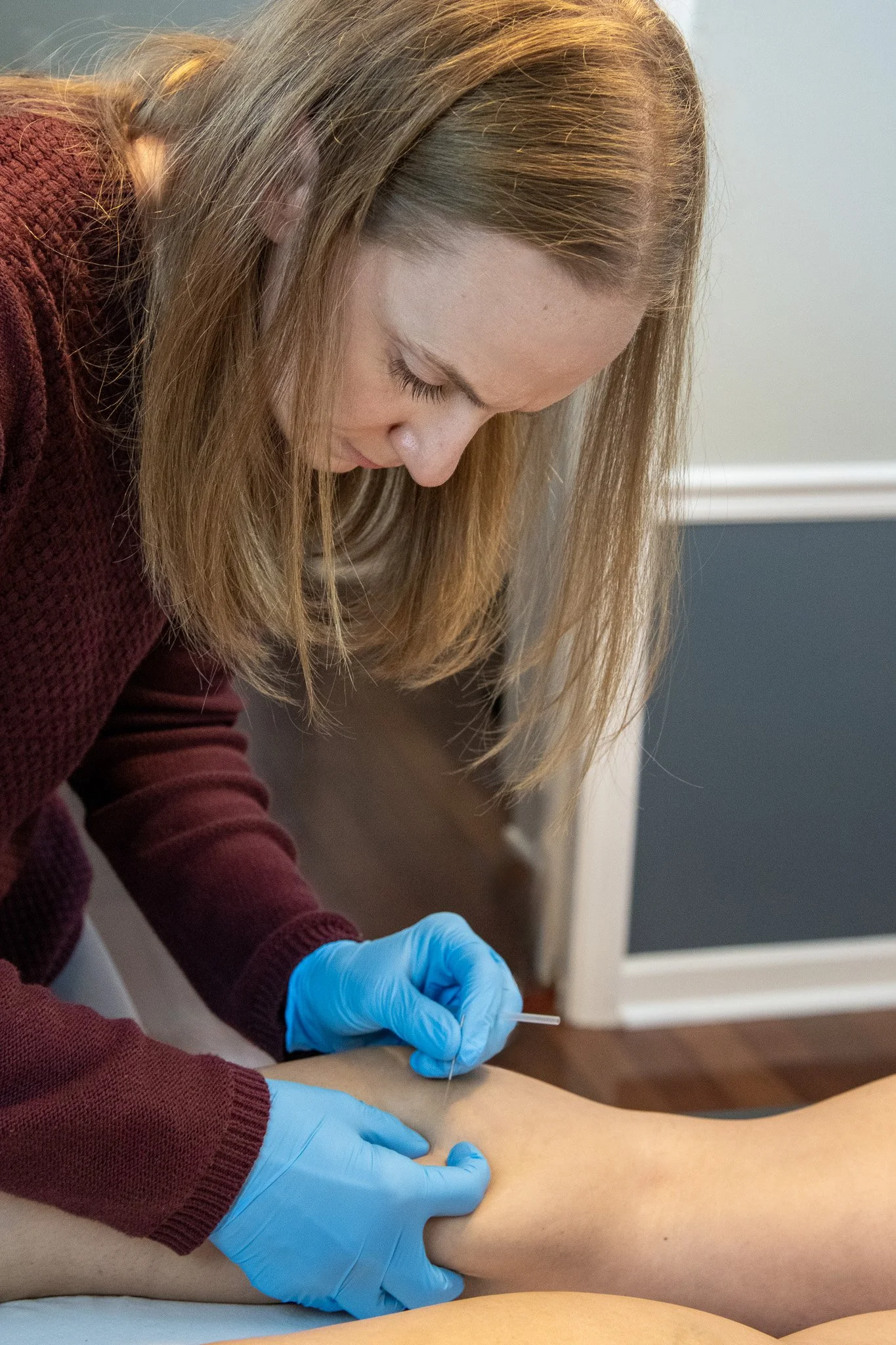Everything You Need to Know About Dry Needling
At Good Land Physical Therapy & Wellness, both Lauren and Sarah have extensive training in dry needling. Dry needling is an intramuscular technique that improves tissue health, muscular responsiveness and performance, and evacuates fluid to help reduce pain and improve function.
Soft tissue techniques like massage or manual trigger point release using hands or a foam roller work for some people but sometimes chronic or irritable “knots” need a little more help. This is where dry needling can be effective. We directly treat the muscle, instead of attempting to treat it through skin and other layers of tissue.
During a dry needling session, we use a thin needle to specifically treat the tight spots within the muscle. We also typically use electrical stimulation with dry needling, which usually makes the technique much more comfortable and more effective with less post-treatment soreness than using a needle alone.
When is dry needling most helpful?
Dry needling is usually most helpful if there is a trigger point or tight “knot” within a muscle. As you push on an area, you may find that it causes “referred pain”, or pain that spreads away from the spot. Dry needling can often deactivate these trigger points to help calm your symptoms down. In some cases, dry needling can also be effective in retraining muscles to work more efficiently or helping overactive muscles learn to quiet down and relax more easily.
What is the technique like?
First, we make sure you’re in a comfortable, relaxed position. We put on gloves, clean the skin, and then work with you to find the areas that would most benefit from being treated. We use a thin, sterile needle and gently tap it into the skin. Then we move the needle into the trigger point or “knot” within the muscle. When we reach this area, there is sometimes an involuntary contraction or “twitch” reflex of the muscle, which can feel a bit odd. Sometimes there is deep, sore, achy or referred pain. Any of these responses is helpful - it typically means we have found a good spot.
Does it hurt?
Often patients tell us it feels more “weird” than painful. At times, it feels like a deep, sore, achy pain, sort of like a deep tissue massage. Sometimes the muscle twitches, which is a normal response, but can feel strange. Your PT will be talking with you throughout the treatment and if you decide that dry needling isn’t for you – no big deal. We will stop the treatment and can try other methods to improve your symptoms.
After the treatment, patients typically feel looser and have less of the pain they came in with. They can be a little sore or achy, a similar feeling as to after a tough workout. This typically goes away within 12-24 hours. Other patients have no pain and just find relief from symptoms.
Is it safe?
Overall, dry needling is quite safe. The needles are very thin, so bleeding or bruising is relatively uncommon. The risk of infection is extremely low, as we use a clean technique with sterile needles.
The biggest risk of dry needling is a pneumothorax (collapsed lung) with needling in the area of the rib cage. This is very rare and we are trained to minimize the risk of this from occurring.
Does it work for everybody and every condition?
Like any other treatment, dry needling does not fix everything. For some people, dry needling can be a very helpful part of treatment. For some conditions, other treatments may be more effective. During our comprehensive assessment, we take a look at what is going on and develop a plan to help you achieve your goals.
More questions on whether dry needling is right for you? Contact us or set up an appointment or complimentary phone consultation.


